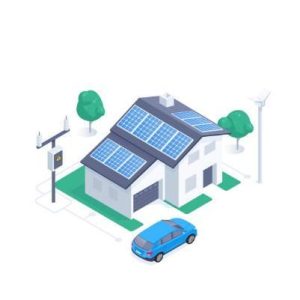The challenge: Renewable energies have an intermittency problem: there is no sun at night, and the wind can stop suddenly.
But… What Is Energy Storage?
“Storage” refers to technologies that can capture electricity, and then release it for use when it is needed. Storage allows the flexible use of energy at different times from when it was generated.
3 Advantages of Combining Storage and Solar
- Balancing electricity loads – Electricity can be used whenever is need it.
- “Firming” solar generation – Help the grid maintain a “firm” electricity supply that is reliable and consistent.
- Providing resilience – Solar and storage can provide backup power during an electrical disruption.
 3 Disadvantages of Not Having Storage Batteries
3 Disadvantages of Not Having Storage Batteries
- Without storage, electricity must be generated and consumed at the same time.
- After sunset or on cloudy days, there is a struggle to generate power.
- In the event of a blackout or electrical disruption there is no power supply
Types of Energy Storage
There are a variety of ways to store different types of energy such as backup batteries. Solar is only one of many energy sources, but it’s pairing with a storage system will keep your home out of the dark.
Pumped-Storage Hydropower
This is energy storage technology based on water. Electrical energy is used to pump water uphill into a reservoir when energy demand is low. Later, the water can be allowed to flow back downhill and turn a turbine to generate electricity when demand is high.
Thermal Energy Storage
Thermal energy storage is a family of technologies in which a fluid, such as water, molten salt, or other material is used to store heat. This thermal storage material is then stored in an insulated tank until the energy is needed. The energy may be used directly for heating and cooling.
Solar Fuels
Solar power can be used to create new fuels that can be combusted (burned) or consumed to provide energy, effectively storing the solar energy in the chemical bonds. Methane is the main component of natural gas, which is commonly used to produce electricity or heat homes.
 Virtual Storage
Virtual Storage
Energy can also be stored by changing how we use the devices we already have. For example, by heating or cooling a building before an anticipated peak of electrical demand, the building can “store” that thermal energy so it doesn’t need to consume electricity later in the day. The building itself is acting as a thermos by storing cool or warm air.
Do I Need Solar Storage?
Ultimately, residential and commercial solar customers, and utilities and large-scale solar operators alike, can benefit from solar-storage systems. As research continues and the costs of solar energy and storage come down, solar and storage solutions will become more accessible.
Written by the Communications and Marketing Team:
Sources:
https://www.energy.gov/ https://www.bbva.ch/ sciencedaily.com

 3 Disadvantages of Not Having Storage Batteries
3 Disadvantages of Not Having Storage Batteries Virtual Storage
Virtual Storage